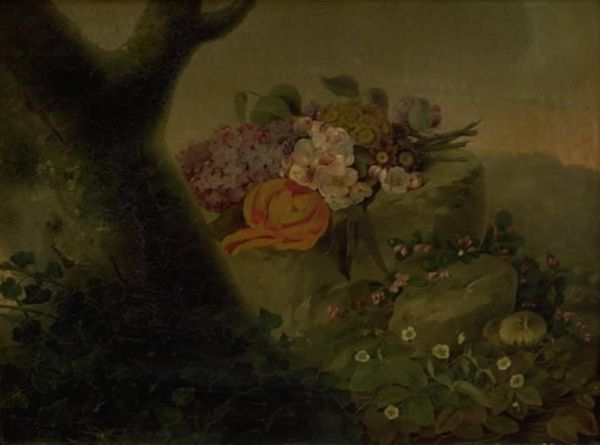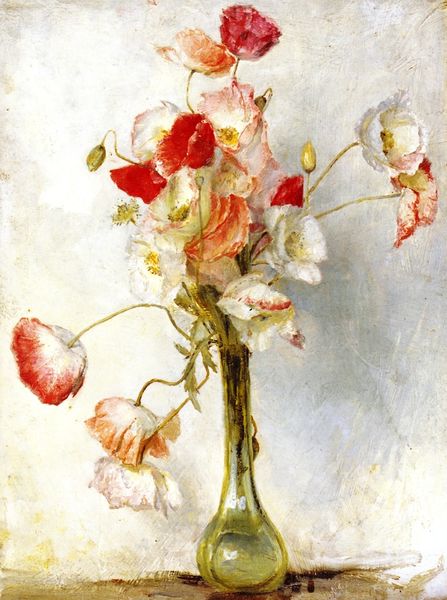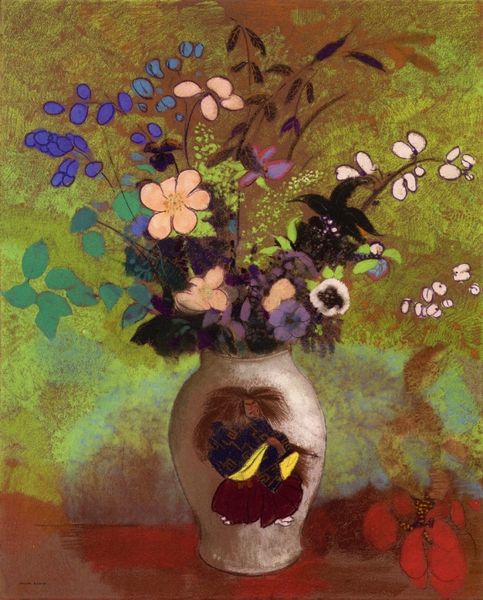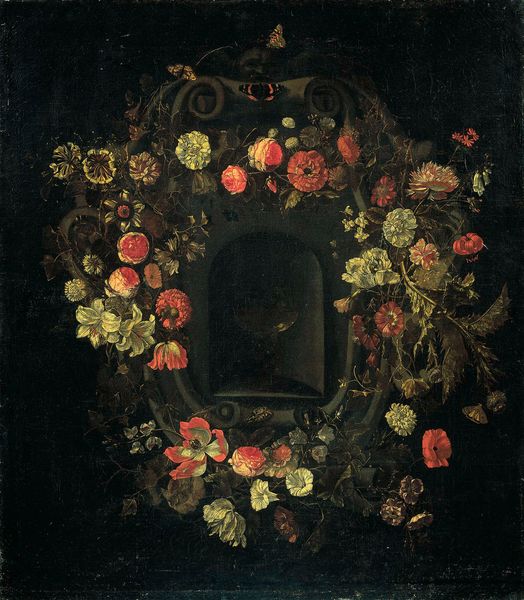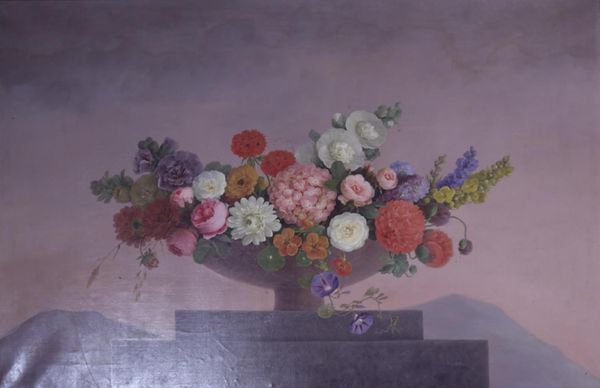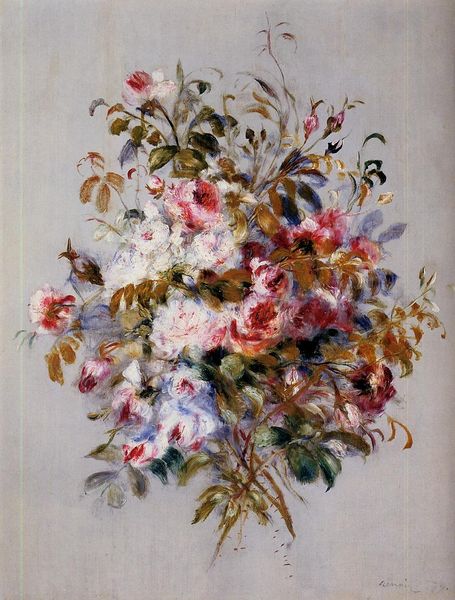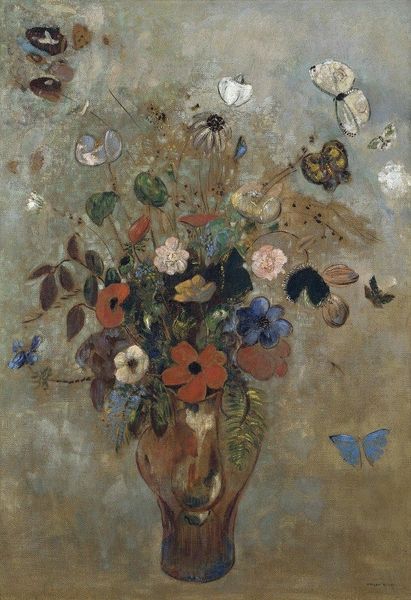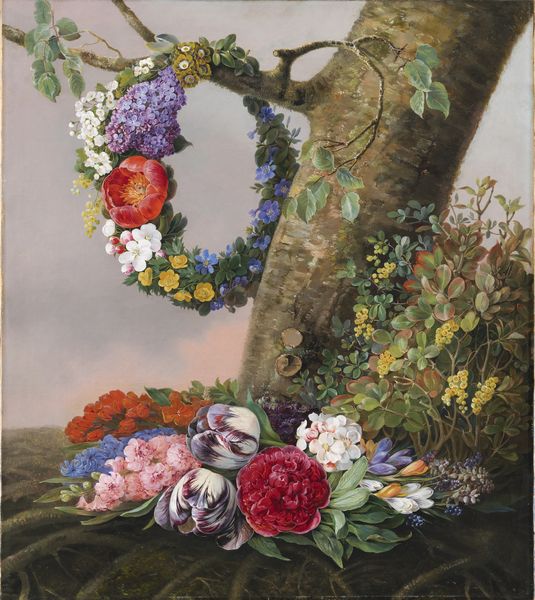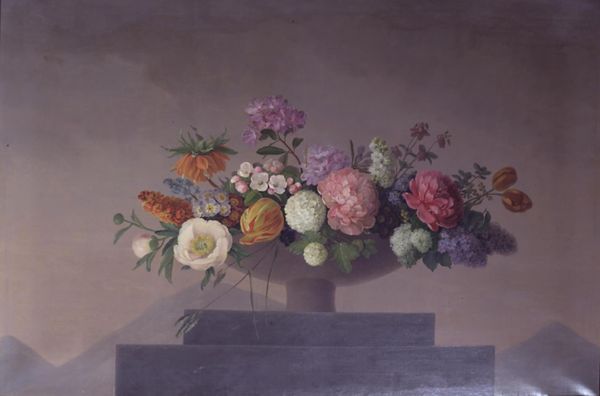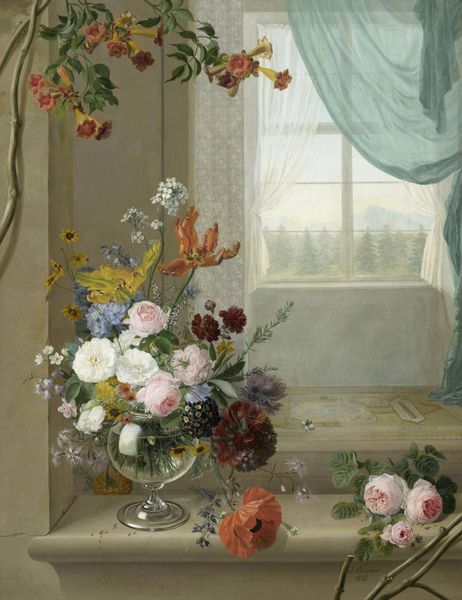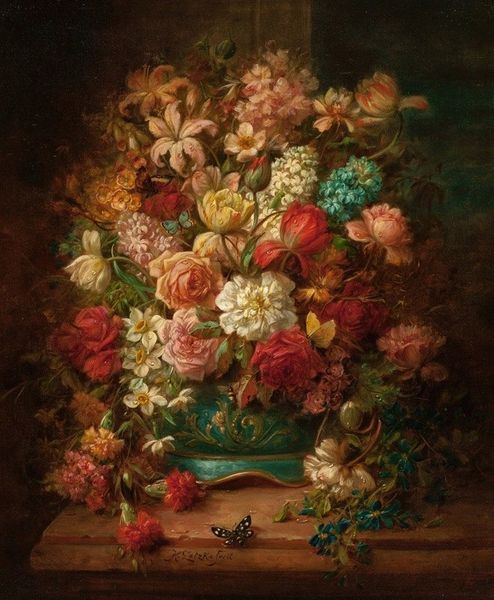
Dimensions: support: 629 x 781 mm frame: 815 x 980 x 75 mm
Copyright: CC-BY-NC-ND 4.0 DEED, Photo: Tate
Editor: This is J.G.S. Herbert's "Allegorical Still-Life," from around 1862, housed at the Tate. The way the flowers seem to spill out of the urn is lovely, but the urn itself looks like a skull. What do you see in this piece? Curator: The skull-like urn is a powerful Vanitas symbol, echoing classical memento mori traditions. Do you notice how the vibrant flowers juxtapose with the dying foliage and the ghostly figures in the background? Editor: Yes, the contrast is so striking! It’s like a celebration of life shadowed by mortality. Curator: Precisely. The imagery evokes a potent cultural memory of life’s transient beauty against the backdrop of eternal questions. What feelings does that stir in you? Editor: It makes you appreciate the present, knowing it’s fleeting. I hadn't considered the historical context of these symbols. Curator: It shows the enduring power of symbols to speak across centuries.
Comments
tate 7 months ago
⋮
http://www.tate.org.uk/art/artworks/herbert-allegorical-still-life-t01110
Join the conversation
Join millions of artists and users on Artera today and experience the ultimate creative platform.
tate 7 months ago
⋮
This is one of several pictures by a little-known painter who specialized in juxtaposing symbols of earthly decay with visions of a spiritual world. In the foreground is a burial mound with a Latin inscription from Juvenal's Seventh Satire in praise of 'honoured tutors' whose urn is to be surrounded by flowers and eternal spring. In the left background is a heavenly city dominated by three crucifixes, one above the other. Juvenal's lines on schoolmasters are part of a general attack on the materialism and dissolution of Imperial Rome. Herbert is presumably making a similar criticism of nineteenth-century England and expressing the need for spiritual, specifically Christian, values. Gallery label, March 1996
